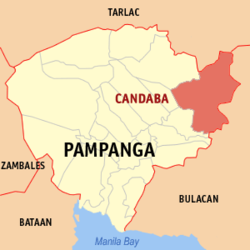
Reference of the 1st picture: http://www.psdn.org.ph/wetlands/gallery_candaba.htm
Reference of the 2nd picture: http://kenngo.aminus3.com/image/2008-02-03.html
The Candaba Swamp is located in Central Luzon, it is a vast complex of freshwater ponds, swamps, and marshes which are composed of surrounding areas of flooded grassland, arable land, and palm savanna on a vast alluvial flooded plain. Flood occurs during the wet seasons, but dries out during the dry or sunny seasons and converts to rice fields and watermelon plantations. It is also crucial for agricultural and fish production, water for irrigation, and natural flood retention.
This swamp or marshland is a crucial area for the life cycle of ducks and for the winter of ducks especially in October and November when the swamp is occupied by thousands of birds. In all, 60 species of birds use the marsh for feeding and roosting.
The main area for waterfowl is an impoundment of about 300 ha, with a mixture of open shallow water, small islands, and rafts of floating vegetation, adjacent to the Pampanga River about 9 km north of Baliwag. The impoundment is used as a fish pond during the rainy season, and then drained in January or February to be used for agriculture. Candaba Swamp acts as a natural flood retention basin holding wet season overflow from the Maasim, San Miguel, Garlang, Bulu and Penaranda Rivers, and draining into the Pampanga River. The natural retention capacity is estimated at approximately 1.5 billion cubic metres.
The Candaba Swamp then continues to get drained or converted to wet agriculture severely limiting the homes for waterfowls. Others converted to fishponds which causes vegetation grounds to be patchy. Siltation is apparent but can be controlled by ensuring that the upland vegetation cover is adequate especially in Sierra Madre. A small portion of the swamp is declared as a sanctuary for birds and became famous for a site for bird watching, protection is need in order to manage water levels to maintain the services that were derived from the wetland. Reference: http://www.psdn.org.ph/wetlands/wetland_candaba.htm Source: The National Wetlands Action Plan for the Philippines Published by: Protected Areas and Wildlife Bureau Department of Environment and Natural Resources
 | |||||
| Reference for the pic: https://en.wikipedia.org/wiki/Candaba,_Pampanga | |||||

No comments:
Post a Comment